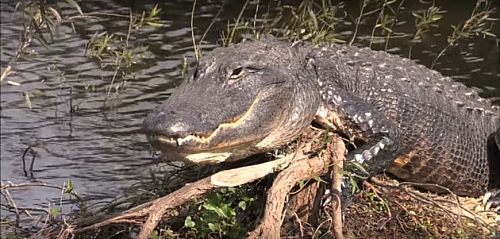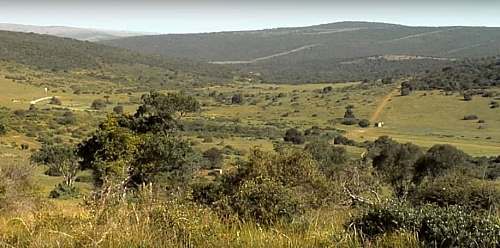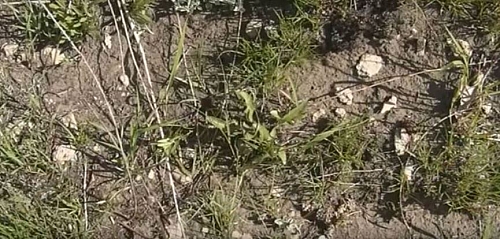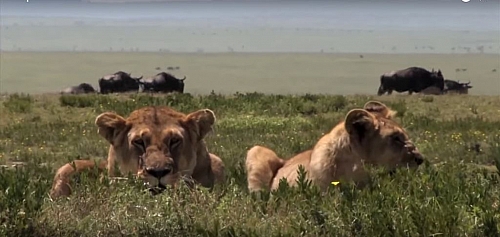Biome community is a natural ecological environment that allows certain interaction between various plants and animals and with other organisms. These plants, animals and organisms possess unique features that allow for proper adaptation, and the mutual relationship helps to create a balance between living organisms and their surroundings.
The structure and the composition of these biomes are characterized by different environmental factors such as location, climate, relief, altitude, rainfall, and light availability. Biomes are very important parts of the earth and they are beneficial to man in many ways, there are different types of biomes which we are going to list and further consider them one after the other here and in subsequent write ups.
Table of Contents
- What is a biome?
- Major biomes of the world
- Grassland biomes
- Types of grassland biomes
- 1. Tropical grassland or savannah grassland
- Tropical grassland location
- Tropical grasslands climates
- Tropical grasslands plants
- Tropical grasslands animals
- 2. Temperate grassland or prairie grasslands
- Climate of the temperate grasslands
- Temperate grasslands plants
- Temperate grasslands animals
What is a biome?
Biome is a large area on the earth surface consisting of different plants and animals in a given community, these plants and animals exhibits certain characteristics and features that enable their adaptation in the environment in which they live. A biome is usually define according to the type of features found, this features which include vegetation, animals, climate, soil, and relief. Biomes play an important role in sustaining the earth and life of native plants and animals.
Major biomes of the world
The major biomes of the world are:
- Grassland biomes
- Desert biomes
- Marine biomes
- Tundra biomes
- Chaparral biomes
Grassland biomes
The grassland vegetation consists largely of herbs, which may include grasses, and grass- like plants and Forbs (broad-leaved herbs). The degree of coverage of this vegetation type may range from continuous to discrete (discontinuous) and may be in strata. This type of vegetation is also closely related to the semi-arid sub type of dry mid latitude climate, and the sub humid type of the moist sub-tropical climate and there is little or no water surplus in the environment.
Types of grassland biomes
- Tropical or savanna grassland
- Temperate grassland or prairie
1. Tropical grassland or savannah grassland
Tropical grassland location
Tropical or savannah grassland are located around the equator and within the central parts of continents like Venezuela, Brazilian highlands, most parts of central Africa, parts of Mexico and Northern Australia.
Tropical grasslands climates
Mean monthly temperature range from 30-320C. Although, temperature is high throughout the year, there is a short slightly cooler season when the sun is overhead at the tropic in the opposite hemisphere. Temperature may drop slightly at the on-set of the rainy season. Heavy convectional storm can give about 80% of annual rainfall total in four or five months. Two seasons usually occur within these biomes- the dry and the wet seasons while humidity is low.
Tropical grasslands plants
The tropical grasslands or savanna vegetation consists of a combination of trees and grassland in various proportions. Unlike the forest vegetation, this has smaller number of trees, species and layers. The appearance of the vegetation can be described as parkland, with trees well-spaced or they are in small groups and are surrounded by or interface with surfaces covered with grasses.
Some other types of plants found in this type of vegetation are shrubs, also called annual found in the low layer. It includes a series of transition forest vegetation and the desert. T
he most wide area of the savannah are identified with wet and dry tropical climate and with the semi-arid sub type of the dry tropical climate, The trees are deciduous and are like those in Britain, they lose their leaves to reduce transpiration, but unlike in Britain, this is due to the dry drought rather than the cold. Trees are drought resistance (xerophytic), even when leaves do appear; they are small, waxy and sometimes thorn-like. Roots are long and extend further to tap any underground water.
Trunks are wider and resistance against many local fires and barks are usually thick to reduce moisture lost. The baobab tree also known as the upside down tree has a trunk 10m in diameter in which it stores water. Its roots like branches hold a minimum number of tiny leaves in order. Other savanna trees are pyrophytic. I.e. their trunks are resistance against many local fires.
Savannah trees reach 6-12m in height. Many have Y shapes and branching trunks are ideal for leopards to rest in after their meals (other trees species are acacia, large herbivores: wildebeest, zebra, antelope carnivores: lion hyenas also some organisms like termite and microbes). Grasses tend to have inward curving blades and silvery spikes, which can grow over 3m in height, and elephant reaches 5m.
Fire is possibly the major determent of the savannah biome, either caused deliberately by farmers or resulting from lighting associated with summer electrical storms.
Tropical grasslands animals
Tropical savanna animals do not settle together in the same place, the world’s greatest diversity of ungulates (hoofed mammals) are found in the savannas of Africa. The antelopes are especially diverse and include eland, impalas, gazelles Oryx, gerenuk and kudu.
Buffalo, wildebeest, plains zebra, rhinos, giraffes, elephants and warthogs are among other herbivores of the African savanna. Others include, zebras, buffaloes, kangaroos, mice, moles, gophers, ground squirrels, snakes, worms, termites, beetles lions, leopards, hyenas, and elephants.
Carnivores include lions, leopards, cheetahs, jackals, wild dogs and hyenas. Termites are especially abundant in the tropical grasslands of the world.
2. Temperate grassland or prairie grasslands
The second type of grassland biome is the temperate grassland vegetation or prairie which consists of the veldts of the Republic of South Africa, the puszta of Hungary, pampas of Argentina and Uruguay, American Prairies and the Russian Steppes. It is located north of the Tropic of Cancer (23.5 degrees North) and south of the Tropic of Capricorn (23.5 degrees South).
Climate of the temperate grasslands
The annual range of temperature is high, as there is no moderating influence from the sea. The land warms up rapidly in summer to give maximum mean monthly readings of around 200C. However, the rapid radiation of heat from mid-continental areas in winter means there are several months when the temperature remains below it freezing point.
Annual amount of rainfall average 500mm and there is a threat of drought. Although 75% of precipitation fall is during the summer growing season, it can occur in the form of harmful thunderstorms and hail showers. The ground is usually covered with snow for several months between October and April. Additionally, there is a close balance between precipitations and evapotranspiration.
Temperate grasslands plants
Prairie consists of tall grasses comprising dominantly of herbs and sub dominants forbs (broad leaves herbs). Trees and shrubs are almost totally absent, but may occur in the same region as forest or wood patches in valleys and other topographic depression.
The grasses are deeply rooted and form continuous and dense sward. The grasses bring out flowers in spring and in early summer while the forbs in late summer. Seasonal fire, human exploitation and occasional fires have significantly altered this ecosystem. Grazing by large mammals also prevents woody shrubs and trees from becoming established.
Blue grama and buffalo grass, purple needle grass and galleta are the dominant species of grasses. Flowers include asters, blazing stars, coneflowers, goldenrods, sunflowers, clovers, psoraleas, and wild indigos.
There are other two main types of grasses in the temperate grassland
- Feather grasses which grow to 50cm and form a relatively even cover
- Tufted (tussock) grasses reach up to 2m. The temperate grassland is a resilient ecosystem;. In lower representative region of tall- grass, prairie typical grasses are big bluestem.
Temperate grasslands animals
Animals in the grasslands are in abundance, they interact with one another in many ways. In North America, the dominant animals found include pronghorn, bison, wolves, coyotes, swift foxes, Barger, black footed ferrets, prairie dogs.
Some smaller animals in the temperate grasslands include mice and jackrabbits, skunks, meadow hawks, quails, sparrow, owls, hawks, grouses, rodent pocket gophers. Animals that live in temperate grasslands can naturally adjust and adapt to dry terrain which have just 10 to 30 inches of rainfalls per year, making temperate grasslands less diverse than the wetter savannah grasslands.
The grasses provide food for burrowing animals such as rabbits, and gophers and large herbivores as antelope bison, and kangaroos; for carnivores as wolves and coyotes and for predatory birds like hawks and eagles.







